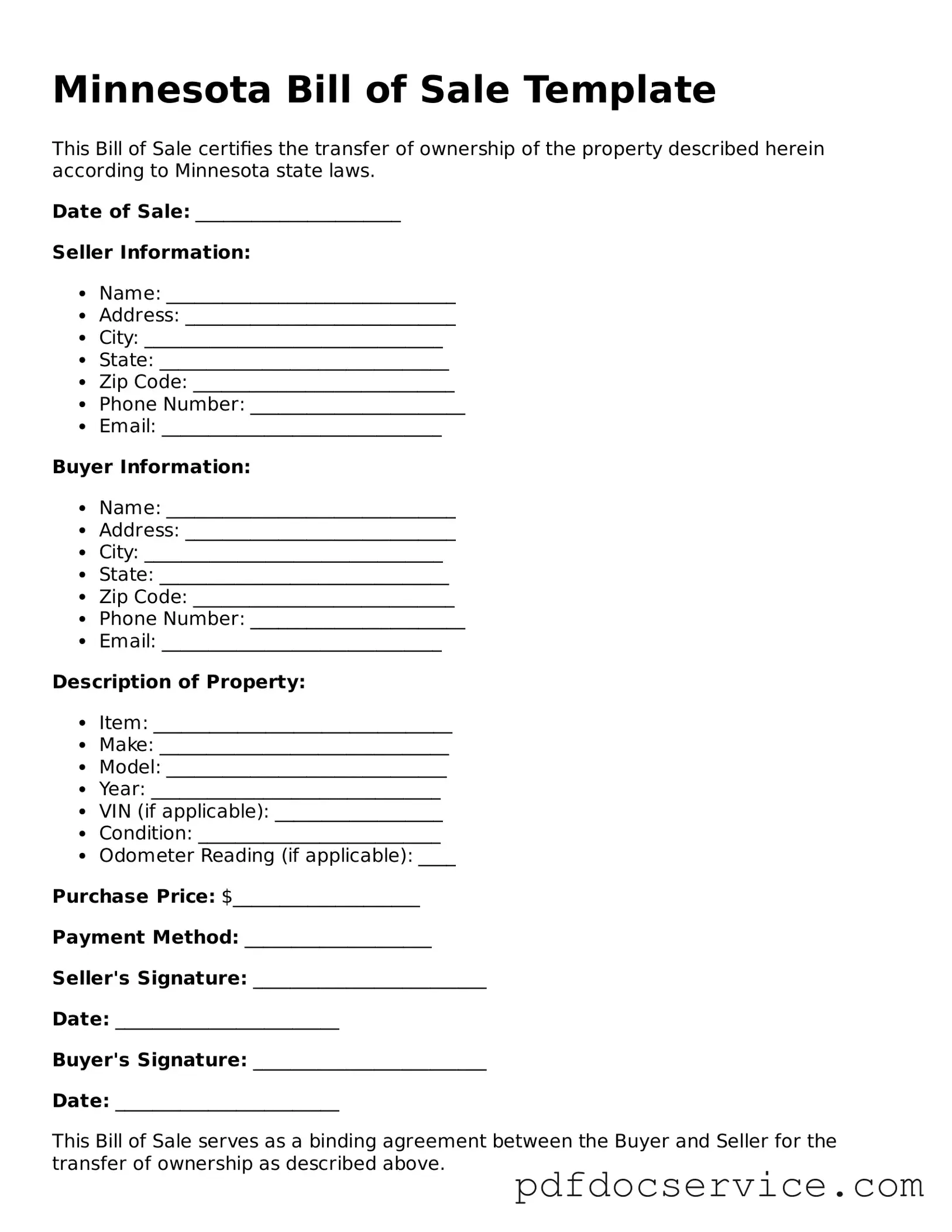What is a Minnesota Bill of Sale?
A Minnesota Bill of Sale is a legal document that records the transfer of ownership of personal property from one person to another. It serves as proof of the transaction and can be used for various items, such as vehicles, boats, and equipment.
Why do I need a Bill of Sale?
A Bill of Sale provides important protection for both the buyer and the seller. It helps to establish a clear record of the transaction, including details about the item, the sale price, and the parties involved. This document can be useful in case of disputes or if you need to prove ownership later on.
Typically, a Minnesota Bill of Sale should include the following information:
-
The names and addresses of both the buyer and the seller
-
A description of the item being sold
-
The sale price
-
The date of the transaction
-
Signatures of both parties
Is a Bill of Sale required in Minnesota?
While a Bill of Sale is not legally required for all transactions in Minnesota, it is highly recommended, especially for significant purchases like vehicles. Some transactions, such as vehicle sales, may require a Bill of Sale for registration purposes.
Can I create my own Bill of Sale?
Yes, you can create your own Bill of Sale. Just make sure to include all the necessary information and details about the transaction. There are also templates available online that can help guide you in creating a valid document.
Do I need to have the Bill of Sale notarized?
In Minnesota, notarization is not required for a Bill of Sale to be valid. However, having it notarized can add an extra layer of security and may be beneficial if you need to prove the authenticity of the document later.
How does a Bill of Sale protect me?
A Bill of Sale protects both the buyer and seller by providing a written record of the transaction. It can help prevent misunderstandings and disputes. If issues arise, such as a claim of ownership or a disagreement over the sale terms, the Bill of Sale can serve as evidence of what was agreed upon.
What if the item sold is damaged or defective?
If the item sold is damaged or defective, the Bill of Sale can clarify the terms of the sale. If the seller provided any warranties or guarantees, those should be documented in the Bill of Sale. Without such terms, the buyer may have limited recourse after the sale is completed.
You can find Minnesota Bill of Sale forms online through various legal websites or state resources. Many local offices, such as the Department of Motor Vehicles (DMV) for vehicle sales, may also provide specific forms for those transactions.
Can a Bill of Sale be used for gifts?
Yes, a Bill of Sale can be used for gifts. While it may not involve a sale price, documenting the transfer of ownership can still be beneficial, especially for valuable items. This helps to clarify the intent and protects both parties in the future.
